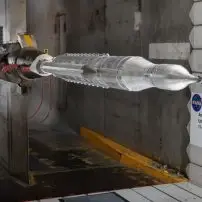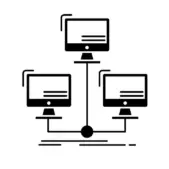Creativity can sometimes feel like an elusive gift granted only to a few. But in reality, creativity is a skill, and like any skill, it can be strengthened with practice and the right environment.
For teams tasked with developing innovative, effective digital solutions, the design sprint framework provides a structured way to unlock creative thinking, validate ideas quickly, and focus efforts on the most promising paths forward. A well-run sprint doesn’t just spark new ideas — it sets teams up for better execution by reducing guesswork and aligning around user-centered solutions early.
In this article, we’ll explore the five core design sprint phases, the roles needed for success, and how design sprints improve collaboration across teams.

Introducing the Design Sprint: 5 Phases to Faster Validation
A design sprint is a structured, time-boxed process that compresses months of work into a few focused days of collaboration and decision-making. It replaces slow, costly development cycles with rapid exploration, prototyping, and testing; helping teams move forward confidently with real user feedback.
Traditionally structured over five days, but often flexibly adapted to fit modern team schedules, the sprint process includes:
1. Understand
Identify the business challenge, map the user journey, and select a focus area. For example, you might target a critical drop-off point in the customer acquisition funnel or address gaps in an onboarding experience.
2. Ideate
Encourage broad solution generation. Quantity matters more than feasibility at this stage — the goal is to uncover as many creative ideas as possible through structured brainstorming activities.
3. Decide
Narrow down competing ideas by identifying those with the highest potential for impact and testability. Feasibility begins to factor in, but bold thinking is still encouraged if it can be prototyped realistically.
4. Prototype
Build lightweight, realistic representations of the top ideas. The prototype doesn’t have to be fully functional — it just needs to be believable enough to test critical assumptions with real users.
5. Test
Gather fast, actionable feedback by putting the prototype in front of real users. Early testing helps teams validate concepts, expose weaknesses, and make informed decisions about what to pursue, pivot, or refine.
Key Roles for a Successful Sprint
A cross-functional team is critical for sprint success. While every sprint is different, certain roles consistently help maximize creativity, decision-making, and execution:
- Decider: Someone with authority to make final decisions and keep the team moving forward.
- Facilitator: An unbiased guide who manages the schedule, activities, and team dynamics.
- Marketer: Provides customer insights and messaging perspectives for user alignment.
- Customer Expert: Often from customer support or service roles, this person advocates for user needs based on direct experience.
- Designer: Brings concepts to life visually and helps translate ideas into tangible prototypes.
- Tech Lead: Advises on technical feasibility and identifies opportunities or constraints early.
- Business/Finance Representative: Offers insights into budget constraints, business goals, and economic viability.
In smaller teams, individuals may wear multiple hats, but diverse expertise ensures a more holistic and strategic outcome.
How the Design Sprint Improves Team Dynamics
Traditional product development often silos teams, causing delays, misalignment, and rework.
Design sprints change the dynamic entirely:
- Cross-functional teams collaborate from the start.
- Everyone has a voice, and critical business, design, and technical insights are integrated early.
- Endless debates are replaced by structured decision-making tied to user feedback.
This collaborative model builds a shared sense of ownership and alignment, accelerating time-to-market and reducing costly pivots down the line. Modern design sprints also adapt seamlessly to remote and hybrid environments. Platforms like Figma, Miro, MURAL, and other collaborative tools allow distributed teams to brainstorm, prototype, and test together in real-time; no matter where they’re located.
Whether you run your sprint in-person, hybrid, or fully remote, the focus remains the same: rapid validation, clear alignment, and user-centered innovation.
Shorten the Path from Idea to Impact
Design sprints empower teams to move fast, think big, and ground innovation in real user needs. By leveraging a proven structure to explore, prototype, and test ideas, organizations can drive meaningful outcomes with less risk and greater speed.
At UpTop, we help companies design and facilitate customized sprints that uncover growth opportunities, align teams, and deliver measurable results. Ready to unlock your team’s next big breakthrough? Let’s start the conversation.


